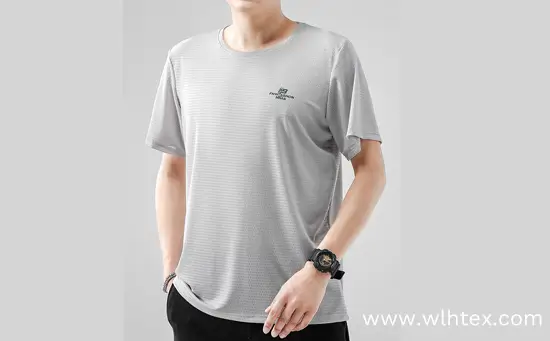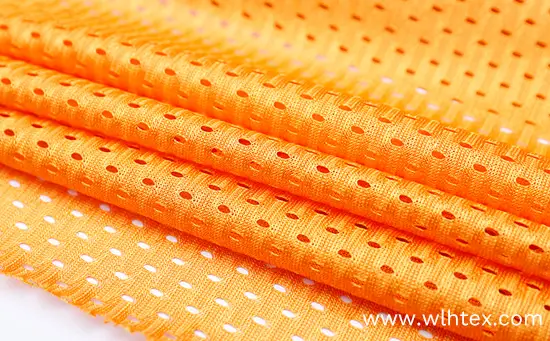6 Guide to What is Mesh Fabric

Mesh fabric has become one of the most popular textile materials used for a range of applications due to its distinctive properties. mesh fabric provides comfort, breathability, and style.
1
What is Mesh Fabric
Mesh fabric is a type of textile characterized by its open, porous structure, created by a network of connected threads or fibers. This fabric is known for its breathability, flexibility, and lightweight nature.
The mesh fabric is highly comfortable to breathe. Mesh fabric was first a popular choice for manufacturers of sportswear. However, due to the numerous advancements, it has become popular in the fashion industry, widely used in various applications, including clothing, sportswear, outdoor gear, and industrial products.
2
Structure
Open Weave: Mesh fabrics have an open weave or knit structure that allows air to flow through easily. This characteristic makes them breathable and well-suited for applications where ventilation is essential.
Interconnected Fibers: The fibers in mesh fabrics are often arranged in a grid-like pattern, creating a network of openings. The size of these openings can vary, influencing the fabric’s transparency and airflow.
3
Materials
Synthetic Fibers: Mesh fabrics are commonly made from synthetic materials such as polyester, nylon, or a combination of both. These materials offer durability, moisture-wicking properties, and resistance to stretching.
Natural Fibers: While less common, mesh fabrics can also be produced using natural fibers like cotton. However, natural fiber meshes may not be as durable or quick-drying as their synthetic counterparts.

▲Mesh fabric made clothes
4
Applications
Sportswear: Mesh fabrics are widely used in athletic wear and sportswear. They provide excellent ventilation, keeping the wearer cool during physical activities.
Footwear: Mesh is often incorporated into the design of athletic shoes to enhance breathability and reduce moisture buildup.
Outdoor Gear: Mesh fabric is used in backpacks, tents, and other outdoor equipment to provide ventilation without compromising strength.
Industrial Use: In industrial settings, mesh fabric may be used for filters, safety vests, and other applications where airflow and visibility are important.
5
Types of Mesh Fabric
- POLYESTER MESH
Polyester mesh is a type of mesh fabric made from polyester fibers. Polyester is a synthetic polymer that is widely used in the textile industry due to its durability, resistance to wrinkles, and moisture-wicking properties. polyester mesh boasts moisture-wicking properties making it suitable for activewear such as sportswear.
- NYLON MESH
Nylon mesh is a type of mesh fabric made from nylon fibers. Nylon is a synthetic polymer known for its strength, durability, and abrasion resistance. When used to create mesh fabric, nylon offers several characteristics that make it suitable for industrial filters, outdoor gear, and bags. Crafted using nylon fibers known for their outstanding strength and abrasion resistance properties.
- POWER MESH
Power mesh is an elastic stretch fabric with excellent support and shape retention properties, often used as the lining material in swimwear, lingerie, and dancewear garments. Breathable yet supportive at once, Power mesh offers optimal garment support allowing garments with both stretchy components as well as support elements to remain flexible over time. It offers breathability without losing control – ideal for garments needing both stretchiness and support!
- TULLE
Tulle is a fine mesh fabric used in decorative and fashion applications. Crafted with silk, nylon, or polyester fibers, tulle can often be found as wedding veils, tutus, and clothing embellishments, as well as embellishments used for clothing projects or crafts.
6
Mesh Fabric Characteristics
Breathability: Mesh fabric’s airy structure makes it highly breathable, providing air to circulate freely, allowing ventilation and moisture management applications a great advantage – something especially relevant to sportswear, outdoor gear, and upholstery applications.
Lightweight: The open structure of mesh fabrics reduces weight, making them comfortable for extended wear.
Quick Drying: Many mesh fabrics dry quickly, making them suitable for activities involving sweat or exposure to water.
Versatility: Mesh fabrics can be found in a range of styles and colors, making them versatile for various design and fashion applications.
Durability
Mesh fabric may seem fragile at first glance; however, its lightweight nature belies this claim, with interlocking or spaced-out yarns providing structural integrity to reinforce strength and wear resistance. But individual durability depends upon the quality of the mesh fabric purchased as well as the intended application.
Flexibility
Mesh fabric’s flexibility enables it to conform easily to different shapes and movements, making it suitable for garments requiring ease of movement or applications such as bags, footwear, or automotive upholstery.

▲ Mesh fabric polyester
In summary, mesh fabric is a versatile material known for its breathability, lightweight nature, and various applications in clothing, sportswear, and industrial settings. The choice of material and design can influence its specific properties and uses.



